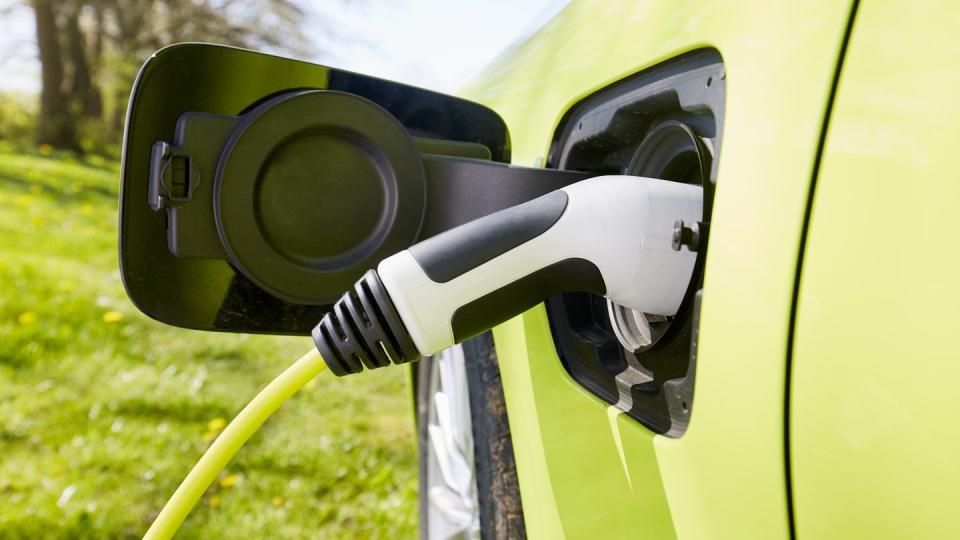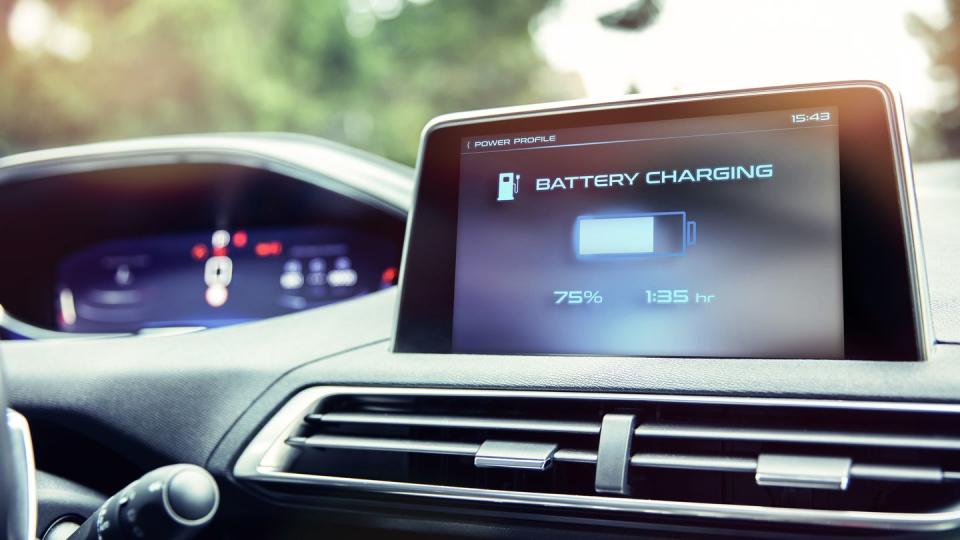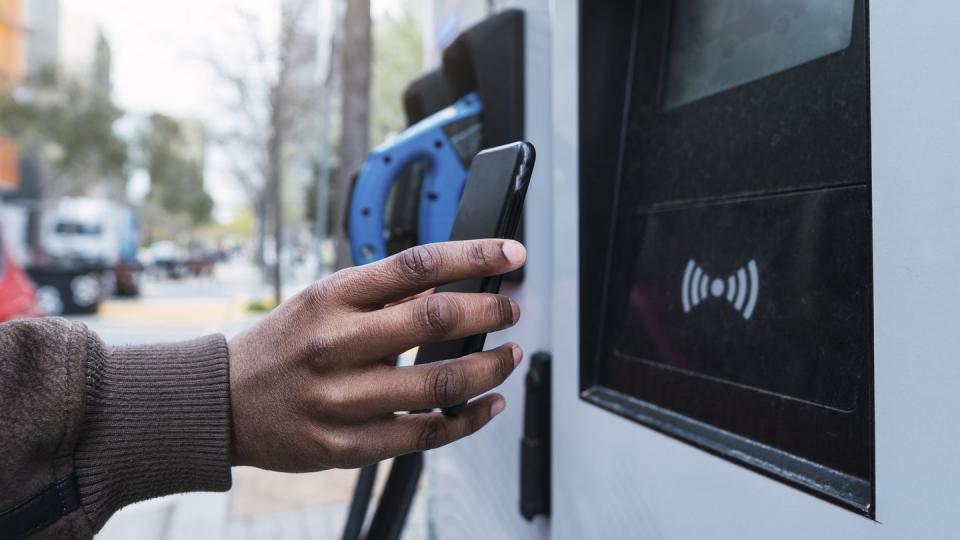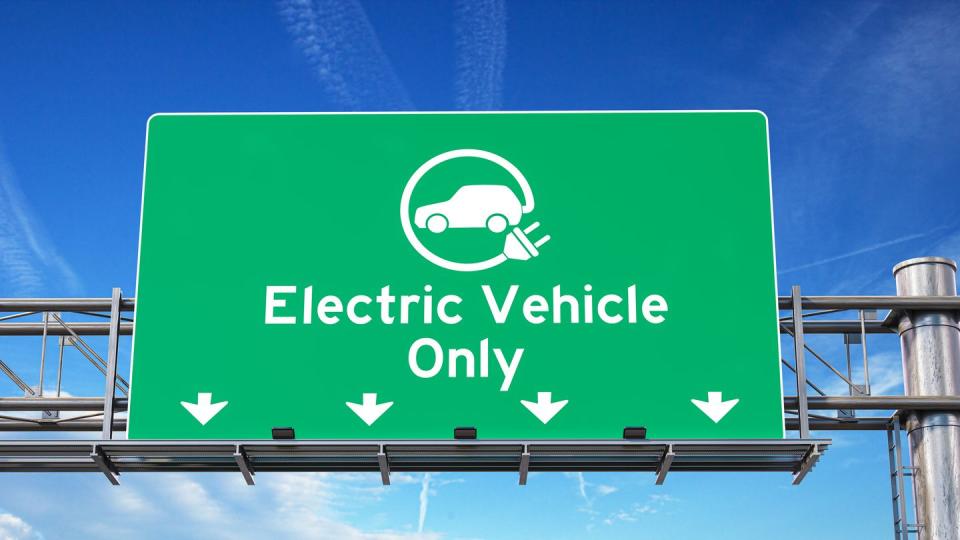Your Frequently Asked EV Questions Answered

We know what you want to know about electric vehicles. Thanks to readily available web-search analytics, we've identified the EV-related subjects that people are researching—en masse and anonymously—most often. You have EV questions? We have EV answers.
How Long Do EVs Last?
Electric vehicles are designed to last as long as any other vehicle. A central question for many people considering an EV is whether the battery pack will need to be replaced during the life of the car. The answer is no. Carmakers design the battery to have the same lifespan as that of the car. In fact, the Federal government requires that automakers warranty the battery for a minimum of eight years and 100,000 miles, which ensures that it’s engineered to go at least that far. Carmakers want their EV batteries to be robust enough to avoid both recalls and warranty replacements.
Just like any other battery, though, those powering EVs will experience a small loss of capacity over the life of the vehicle. This isn’t anything like a mobile-phone battery, however, which may hold only a fraction of its original energy after three or four years. An EV battery is considered at the end of its life when it reaches around 70 percent of its original capacity. So, a car with an original 250-mile range should still be capable of about 175 miles between charges. Absent extraordinary circumstances, it will likely take longer than 10 years for modern EVs with liquid-cooled batteries to degrade that far—and perhaps longer. Most EVs 10 or more years old are still on the road—albeit with slightly reduced range.
How Do I Charge at Home?
You can recharge an EV at home from a wall outlet using the 120-volt portable charging cord that’s standard or optional with all new EVs—but you won't want to. The far better solution is installing what’s called a Level 2 charging station, operating at 240 volts—the same voltage used by electric stoves and clothes dryers.

An electrician can install a circuit dedicated to supplying the charging station, with a dedicated breaker in your panel. The charger hangs on the wall in your garage, or can be mounted outside if you park in a driveway. It’s entirely safe to plug in an EV and leave it outside in rain or snow.
Installation costs vary with the age of the house, the location of the breaker box, and other factors. Homes built or rewired from the 1980s onward have 200-amp service, giving spare capacity for an EV charger. A cable run from your breaker box to the charging station might cost a few hundred dollars, plus a several hundred more for the home charging station. A setup like this can fully recharge most EVs overnight. Unfortunately, for a lot of apartment dwellers home charging is not an option, so be sure to consider what charging options are available to you before you commit to EV ownership.
What About Public Charging?
There are two types of public charging: Level 2 stations and DC fast chargers. Level 2 chargers are similar to the kind you install at home; they're slower, making them best for quick topping-up or long-stay parking. DC fast chargers are the much quicker type found along major travel routes. They're used more like gas stations for gasoline cars are today: to add more energy during a quick stop.

Some of the largest public charging networks are ChargePoint, Electrify America, EVgo, and Shell Recharge. Some EVs have route planning built into their navigation systems that can route you to nearby charging sites as needed or plan your route to keep you close to charging stations located along the way. Third-party apps also let you route trips without prioritizing any specific network; three of the most-used are Plugshare, ABRP (A Better Route Planner), and Chargeway. Each charging network’s app shows its own stations, and often others as well.
Keeping an EV sufficiently charged up during a long trip isn't as seamless as simply exiting the highway when you see a gas-station sign, but it’s getting easier—and EV drivers get proficient quickly. The one challenge is that many public networks are not reliable enough to be counted on; this is one reason several makers have done deals to let their cars use Tesla's ultra-reliable Supercharger network, starting sometime in 2024.
How Hard is it to Use a Public Charger?
The experience of using a public EV charging station varies—a lot. Some stations let you drive up, plug in, and walk away, while automatically billing your account. That's possible with some vehicle makes but not all. Failing that, you can use a network’s phone app, pay by credit card, or call a toll-free number to activate a charging station. Interoperability between the several charging station providers isn’t yet where it should be, meaning you will want more than one network’s app on your phone for the sake of convenience.

Prices vary from state to state, and location to location. Charging speed is also a factor; Level 2 charging may be 15 cents a kWh, while the fastest of fast chargers may be a multiple of that.
Does it Cost a Lot to Charge an EV?
That depends where and when you charge. Home electricity rates vary a lot, from 16-to-35 cents per kilowatt-hour (kWh). The U.S. average is now about 16 cents per kWh, and you’ll get roughly three miles for each kWh in an electric car or small SUV and two miles in a large, heavy electric truck. So, charging at home at the average price means you spend about $5.30 to go 100 miles in the smaller EV, and $8.00 in an electric truck. Compare that to what it would cost to fuel those same types of vehicles at your current gasoline price, and you’ll see how cheap EVs are to “fuel” per mile.
At public fast-charging stations, rates usually vary from 25-to-50 cents per kWh. So, the same 100 miles will now cost $8.00 (for a car or small SUV) to $25.00 (for a truck). Many EV makers, however, provide some number of free fast-charging hours during the first two or three years of ownership, making road-trip recharging entirely free for that time.
Can I Get an EV Tax Credit?
Under the current regulations, only a minority of EVs on sale today qualify for the tax credit, also referred to as the federal purchase incentive (view the list here). That’s because they must be built in the U.S., Canada, or Mexico, and their batteries must be made domestically and must contain minerals from only certain countries.
The workaround is leasing. All battery-electric vehicles qualify for the purchase incentive if they are leased rather than bought. That incentive goes not to you but to the leasing company, though, so check that you’re getting the full amount of the incentive passed along to you from your lessor.
Are EVs Expensive to Maintain?
In general, a battery-electric vehicle has fewer maintenance needs than a vehicle with a gasoline engine. EVs don’t need oil-and-filter changes or, down the road a bit, engine air filter or spark-plug replacement. That means you won’t be visiting the dealer at regular mileage intervals. EVs do still need wear items like tires, wiper blades, brake pads, and cabin air filters replaced.
Are EVs Different to Drive?
Though EVs drive almost exactly like gas-engine vehicles, there are a few differences to adjust to when driving an EV for the first time. Of course, you won't hear the familiar sound of an engine and you'll find most EVs have surprisingly brisk acceleration. Many are downright fast.
The one most noticeable difference from gasoline-powered vehicles is what's called regenerative braking. When you lift off the accelerator pedal, the motor that powers the wheels can instantly and automatically convert into a generator to help recharge the battery. The resistance while in this generator mode slows the car down as if you dropped it into a lower gear or applied the brakes moderately.

Many EVs offer adjustable regen, with some enabling you to turn it off completely and coast when you lift off of the accelerator, just as you would in a gas car. Lots of EVs also offer a “one-pedal driving” mode in which strong regenerative braking takes you all the way down to a dead stop, and you only rarely need to touch the brakes in normal driving. It can take a while to get used to controlling the car solely with your right foot, but we've found it to be both fun and convenient to drive this way, especially in city traffic. Best of all, your traditional hydraulic brakes are still there whenever you need them to slow you down more quickly than regen can.
You Might Also Like

 Yahoo Autos
Yahoo Autos 